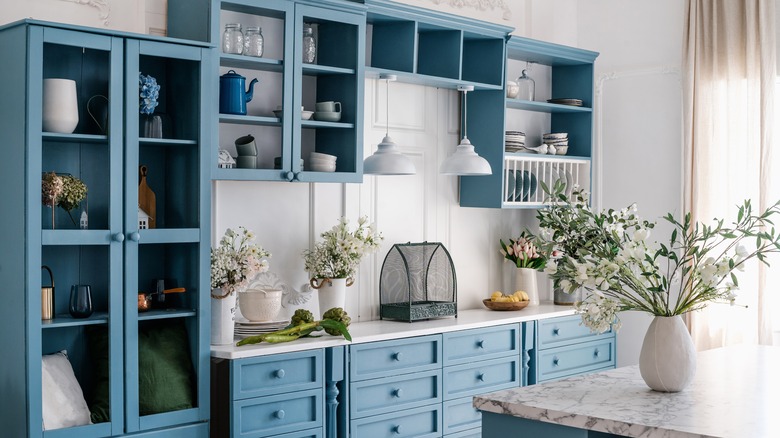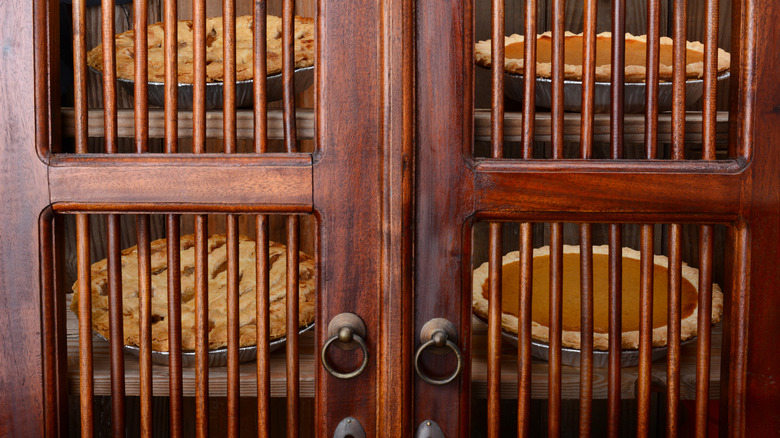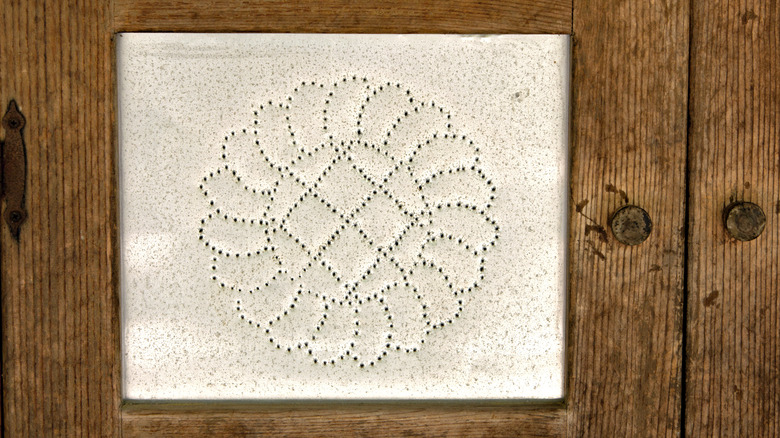The Charming & Useful Cabinet Your Kitchen Has Needed All Along
Kitchen storage can be a mixed bag, with some layouts allowing ample cabinets and spacious pantries, while others force you to make do with the limited space you have. A tried and true method for bringing in additional room for essentials is using a freestanding cabinet to augment existing storage space. It's an approach that once reigned during the 1800s when most homes favored stand-alone cabinetry over built-ins. One of the most popular pieces, the pie safe, had a unique design that offered a safe place for pies and other baked goods to cool and stay safely stored away. While the practice of using them in every kitchen waned with the advent of ice boxes and refrigeration, these charming cabinets can still play a role in your kitchen storage solution, as well as bring with them a bit of old-world rustic charm.
You may have spotted these pieces in antique shops or older homes with more rustic design schemes, but they can also be quite functional for modern-day kitchen needs as well. They are an efficient and stylish way to free up cabinet space in existing cabinets and add more storage to your kitchen. They are also beautiful and distinctive to look at.
What is a pie safe?
Pie safes, sometimes called pie cabinets, pie chests, and pie cupboards, had their roots in the Pennsylvania Dutch communities in the 18th and 19th centuries that settled in the U.S., and are believed to have originated in Germany. They were designed to safely keep away insects and mice but still allow air to filter through the cabinet as the baked goods cooled. This free flow of air also prevented mold. Since most goods were made at home, this was a great way to keep things fresh longer. They were often made of inexpensive pine wood, though you could also find them made of other woods like oak or maple.
Their design varied from large, double-doored cabinets with shelves to other more bureau-like layouts with drawers. Some had a mix of both. They typically were outfitted with doors or panels on the side or top with perforations that allowed air to go through. Made of tin or copper, these pans were usually decorative in some way, bearing designs like hearts, stars, presidential silhouettes, or religious imagery. Some employed glass fronts, while others used materials like screen or mesh. Most were freestanding, but some early pieces were mounted directly on the wall.
Why you need one
While there are a number of ways to keep baked goods fresh for longer now, including preservatives, refrigerators, and plastic storage containers, you may still want to add one of these dynamic and historically charming pieces to your kitchen or dining room. They are often quite rustic, making them an excellent fit for extra storage in modern farmhouse style, cottagecore, or shabby chic decor spaces. While antique pie chests are available at markets, they can be expensive and rare finds, but modern retailers and many Amish furniture makers do have newer pieces modeled on older pie chests.
Use them to store baked goods or bread, or repurpose them as dishware cabinets, coffee stations, or for extra pantry storage. They also make a great place to keep root vegetables and some produce in a dry and arid environment. If you love the look of a pie chest but can't spring for an antique, consider changing out the cabinet doors of any old two-door cabinet or old dresser with tin or copper accents for a pie-safe look. You can also build one from scratch.


